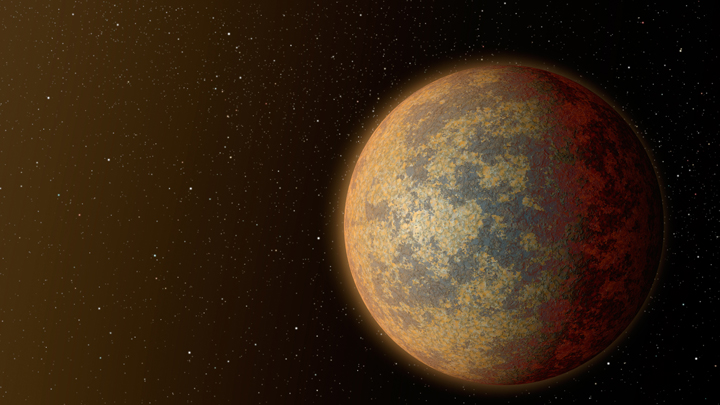TORONTO – How far we’ve come. Thirty years ago, astronomers theorized that planets could orbit other stars in our galaxy. Today, we know of more than 1,800 exoplanets with more than another 5,000 to be confirmed.

Now, two telescopes — using very different methods — have discovered two more unique and intriguing worlds orbiting far off stars.
READ MORE: Water discovered on asteroid points to habitable exoplanets
NASA’s Hubble Space Telescope together with the W.M. Keck Telescope in Hawaii, has uncovered a planet roughly the size of Uranus. It used a method called gravitational microlensing, where the a star in the foreground amplifies the light of a background star. If the star in the foreground has planets, the planets may also amplify the light of the background star, however, for a much shorter period.
This discovery is particularly special as most giant planets so far catalogued orbit close to their stars, whereas this Uranus-sized planet orbits far from its host star. This microlensing technique may help to tally up more planets that are colder and further away from their stars.
Another exoplanet that is fascinating astronomers has also been confirmed by the Spitzer Space Telescope.
The planet, called HD 219134b, is just 21 light-years away, found in the constellation Cassiopeia.
Astronomers detected the planet by using the transiting technique, where a planet is detected as it passes in front of a star, causing the brightness to dip ever so slightly. HD 219134b is the closest planet ever detected using this method.
A paper on this discovery will appear in the journal Astronomy & Astrophysics.
“Most of the known planets are hundreds of light-years away. This one is practically a next-door neighbor,” said astronomer and study co-author Lars A. Buchhave of the Harvard-Smithsonian Center for Astrophysics in Cambridge, Massachusetts.
The planet was first discovered using a ground-based telescope in the Canary Islands, with Spitzer conducting the follow-up observations. Astronomers estimate the planet to be a rocky world about 1.6 times the size of Earth with a mass of about 4.5 times that of Earth’s. It also has a very short orbit, completing just one in three days.
READ MORE: Astronomers spot aurora on failed star that is 10,000 times more powerful than those on Earth
These new discoveries come on the 20th anniversary of the first discovery of a planet orbiting an Earth-like star.
In 1992, astronomers Aleksander Wolszczan and Dale Frail discovered two rocky planets around a pulsar — a small star that is highly magnetized and that rotates at incredible speeds. It was the first time planets were confirmed orbiting other stars.
WATCH: 16×9 — The Search for Life
But then in 1995 Michel Mayor and Didier Queloz found the first planet orbiting a sun-like star. This planet, half the size of Jupiter, is so close to its host star that it almost touches the surface.
Since then, using ground-based methods as well as space telescopes such as Kepler and Spitzer, evidence has continued to mount that most stars support planets of some kind, be it rocky worlds, giant Jupiter-sized planets or even worlds made of diamonds.
What was once science fiction is now a reality: there are a wealth of planets out there and there could be life looking back at us.
A fictional promotional travel poster for Kepler-186f, the first Earth-size planet discovered in the potentially ‘habitable zone’ around another star, where liquid water could exist on the planet’s surface. (Credit: NASA/JPL)
And good news: you can actually discover these exoplanets for yourself. Not an astronomer? No worries. You just need your eyes, common sense, and a tutorial.
Planet Hunters is a public initiative run by Zooniverse that invites the public to help identify possible exoplanet candidates, using data collected by the Kepler Space Telescope.
It’s amazing to think that 20 years after we found a world around a far away star, anyone can discover a planet.




Comments